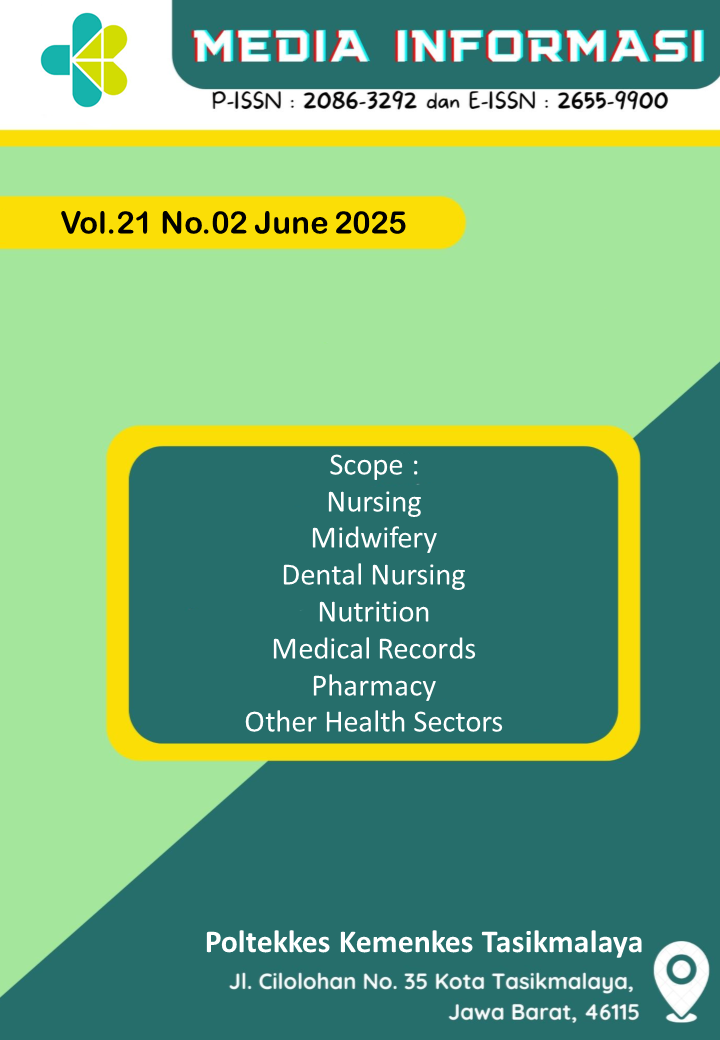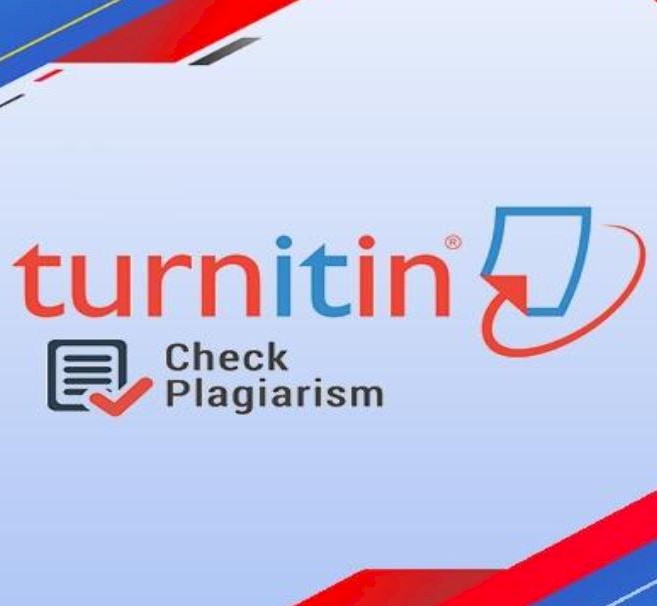Elsimil Application to Increase Knowledge and Attitudes of Young Women to Prevent Stunting
DOI:
https://doi.org/10.37160/mijournal.v21i02.847Keywords:
Elsimil Application; Knowledge; Attitude; Young WomenAbstract
Based on the results of the Indonesian Nutrition Status Survey, the incidence of stunting in 2021 was 24.4%, and it decreased to 21% in 2022. The government continues to strive to reduce the stunting rate with a target of 14% by 2024. In 2022, the National Population and Family Agency (BKKBN) innovated through the Elsimil application to reduce the stunting rate. This study is relevant to the government's efforts to reduce the incidence of stunting. The primary objective of this study is to assess the application of Elsimil in women as prospective brides and mothers to prevent stunting. This research aims to analyze the application of Elsimil in increasing the knowledge and attitudes of teenagers regarding the prevention of stunting in Cirebon City. This is a quantitative research study, a type of quasi-experimental research with a one-group pretest-posttest design. The population is late adolescents (15-19 years old). The sample consisted of 30 young women aged 15-19 years, selected using purposive sampling. The research instrument uses a questionnaire. Univariate analysis uses frequency distribution. Bivariate analysis of the Marginal Homogeneity test for the knowledge variable yields a p-value of 0.00. The McNemar test for the attitude variable yields a p-value of 0.00. There are significant differences in knowledge and attitudes between those who used the Elsimil application before counseling and those who used it after counseling. The Elsimil application can serve as an alternative educational medium for teenagers to help prevent stunting.
Downloads
References
Azzahra, S., Sukmawati, & Witdiawati. (2024). Relationship of Knowledge and Attitude Towards
Stunting Prevention in Adolescent Girls. Indonesian Journal of Global Health Research, 2(4), 2843–2852. https://doi.org/10.37287/ijghr.v2i4.250
BKKBN. (2020). Rencana strategis Badan Kependudukan dan Keluarga Berencana 2020-2024 (1st ed.).
BKKBN. (2022). Badan kependudukan dan Keluarga Berencana Kota Cirebon.
Dahlan, S. (2017). Statistik Untuk Kedokteran dan Kesehatan (5th ed.). Salemba Medika.
Dinkes Kota Cirebon. (2022). Laporan Dinas Kesehatan Kota Cirebon tahun 2022.
Effendy Syamsuri. (2022). Konsep Pencegahan Stunting Melalui Aplikasi Elsimil (Elektronik siap nikah
dan Siap Hamil) Bali Penyuluh Keluarga Berencana Kabupaten Ponorogo. In Universitas Muhamadiyah Ponorogo.
Fitriami, E., & Galaresa, A. V. (2022). Edukasi Pencegahan Stunting Berbasis Aplikasi Android Dalam
Meningkatkan Pengetahuan Dan Sikap Ibu. Jurnal Ilmiah STIKES Citra Delima Bangka Belitung, 5(2), 78–85. https://doi.org/10.33862/citradelima.v5i2.258
Hairuddin K., H. K., Yulis, D. M., & Serli, S. (2023). Utilization of Technology as a Health Promotion
Strategy for Stunting Knowledge among Nursing Students Post-Covid-19 Pandemic. Jurnal Penelitian Pendidikan IPA, 9(SpecialIssue), 974–981. https://doi.org/10.29303/jppipa.v9ispecialissue.5783
Heryani, H., Lestari, L., & Suhanda, S. (2023). Knowledge of Young Women Regarding the Components
of “My Plate” as a Strategy for Stunting Prevention. Genius Journal, 4(2), 340–345. https://doi.org/10.56359/gj.v4i2.309
Kemenkes RI. (2018). Data dan informasi Profil Kesehatan Indonesia (Issue 1).
Kemenkes RI. (2022). Profil Kesehatan Indonesia 2021. In Pusdatin.Kemenkes.Go.Id.
Kementerian Kesehatan RI. (2018). Riskendas 2018. Laporan Nasional Riskesndas 2018, 44(8), 181–222.
Lestari, C. I., Amilia, R., Pamungkas, C. E., Rospia, E. D., & Cahyaningtyas, D. K. (2023). Effectiveness of
EDUWAP in Increasing Knowledge about Stunting. Embrio, 15(2), 234–241. https://doi.org/10.36456/embrio.v15i2.7654
Mulidah, S., Asrin, A., Fitriyani, A., Subagyo, W., & Sanjaya, S. (2022). The Gemas Application Toward
Knowledge and Attitude in Preventing Stunting of Teenagers. Malaysian Journal of Medicine and Health Sciences, 18, 70–75.
Naurah Lisnarini, Suminar, J. R., & Yanti Setianti. (2022). BKKBN Communication Strategy on Elsimil
Application as a Media for Stunting Prevention in Indonesia. Proceedings Of International Conference On Communication Science, 2(1), 704–713. https://doi.org/10.29303/iccsproceeding.v2i1.76
Sarliana, & Yuli Admasari. (2022). Knowledge and Attitudes of Young Women about the First 1000
Days of Life (HPK) in Stunting Prevention. Journal of Global Research in Public Health, 7(2), 142–147. https://doi.org/10.30994/jgrph.v7i2.398
Siswati, T., Kasdjono, H. S., Olfah, Y., & Paramashanti, B. A. (2022). How Adolescents Perceive Stunting
and Anemia : A Qualitative Study in Yogyakarta ’ s Stunting Locus Area , Indonesia. Jurnal Masalah-Masalah Sosial I, 13(2), 169–186. https://doi.org/10.46807/aspirasi.v13i2.3097
Siti Kurnia Widi Hastuti, Setianingsih Setianingsih, Ony Linda, Nur Ulfah, & Muchamad Rifai. (2022).
Rembug Stunting Sebagai Upaya Percepatan Penurunan Kasus Stunting di Kecamatan Kemusu Kabupaten Boyolali. Jurnal SOLMA, 11(3), 694–703. https://doi.org/10.22236/solma.v11i3.10208
Sugiyono. (2017). Metode Penelitian. Alfabeta.
Sulandjari, R., Wulan, H. S., Amboningtyas, D., & Hasibuan, L. B. (2023). Efektifitas Komunikasi Media
Sosial Dalam memahamil Peran Elsimil untuk Menekan angka Stunting di Indonesia. Egaliter, 12(7), 60–86.
Sulistyowati, D. W. W., Sa’diyah, H., & Islamiah, A. (2023). The Effect of Stunting Prevent Card (SPC)
Games on Adolescent Knowledge in Stunting Prevention (Vol. 2021, Issue ICoHPS). Atlantis Press International BV. https://doi.org/10.2991/978-94-6463-324-5_6
Tebi, Dahlia, Wello, E. A., Safei, I., Rahmawati, & Juniarty, S. (2022). Literatur review : Faktor-faktor
yang Mempengaruhi Terjadinya Stunting Pada Anak Balita. Fakumi Medical Journal, 1(3), 234–240. https://doi.org/10.33096/fmj.v1i3.70
Downloads
Published
How to Cite
Issue
Section
License
Copyright (c) 2025 didit khaerudin, Karina Utami, Lisnawati Lisnawati

This work is licensed under a Creative Commons Attribution-ShareAlike 4.0 International License.












